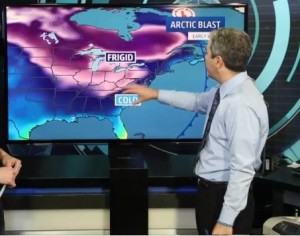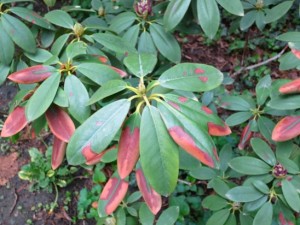Yo-Yo Weather: The Arctic Plunge of 2014 and Your Garden
Sitting in a warm room looking out at our landscape enduring the 9 degree afternoon (up from -17 degrees the night before) and listening to reports of -35 degree wind chill, I can’t help but think about what is happening to the plants. Because it was over 50 degrees a few days ago, there’s not even a trace of the snow cover which could have protected the roots.
In an ideal winter for plants, it would slowly, but steadily, cool down throughout the fall. The plants would be prepared when the cold temperatures (never below zero, please) finally arrived. Further the root zones would never suffer freezing and thawing because they would rest easily under a winter-long layer of snow.
This year has been the antithesis of that ideal. First we suffered through a dry autumn preventing plants from filling their roots, branches, and for the evergreens, leaves with water. Temperatures have rocketed up into spring-like 50’s only days after sitting well below zero. Winds howling at 30 more miles per hour or more have created wind chills as low as 50 degrees below zero, pulling moisture from plants.
So what does this mean for spring?
We will all find out how much damage has been done by the yo-yo weather as March flows into April. But there are certain things we can be on the lookout for. Any marginally hardy plants (the zone 7 shrub doing well in a sheltered zone 6 site) is not likely to survive. The chaste tree (Vitex) growing in my front yard may die before spring.
The next casualty is likely to be the buds of flowering trees and shrubs. Forsythia and peach buds are both believed to die at -15 degrees. Many other flower buds may be killed as well. While leaf buds are hardier than flower buds, the loss of early leaves is a more serious matter. The plant will need to use previous energy early in the spring to replace leaves that die before they ever open.
Leaf burn is an early and obvious sign of winter damage. When the plant cannot send enough water up to the leaves either because the winds are removing it too quickly, or because the roots cannot find enough free water in the frozen ground, the leaves begin to die around the margins and needles die at their tips. Sometimes the entire leaf (or needle) will take on the burned look. That leaf will most likely fall off early in the spring, hopefully to be replaced. Those burned just on the edges should be allowed to remain because the center of the leaf is still capable of creating food for the plant.
An unseen victim of extreme cold can be the plant’s xylem. Xylem is the layer of plant cells that transport water and minerals up to the leaves. If the xylem in smaller branches is damaged by the cold, affected branches will be slow to flower or leaf out in the spring, and they may even die.
Without snow cover, the feeder roots (those nearest the surface of the soil) of some plants can be damaged or killed. Some roots dying off is neither unusual nor dangerous to the plant. The question is how many roots have been killed, and you won’t know that until growth should begin in the spring.
Most herbaceous plants—the perennials which died down to the ground in the fall—will be much less affected by the cold, unless freezing and thawing of the ground occurs with the roots then being exposed to the cold. Adding extra mulch or evergreen branches can still help.
The good news is the cold weather can also reduce the pest population. Subzero weather will kill some insect egg masses wintering over on trees, such as winter moth. While snow cover can provide protection to voles (who damage lawns) and rabbits (who damage tree and shrub bark), the lack of snow cover makes them vulnerable to larger predators, hawks, foxes and coyotes.
For now, the gardener can only to see whether our terrible winter weather continues or whether Mother Nature will give us a break with an early and gentle spring.

